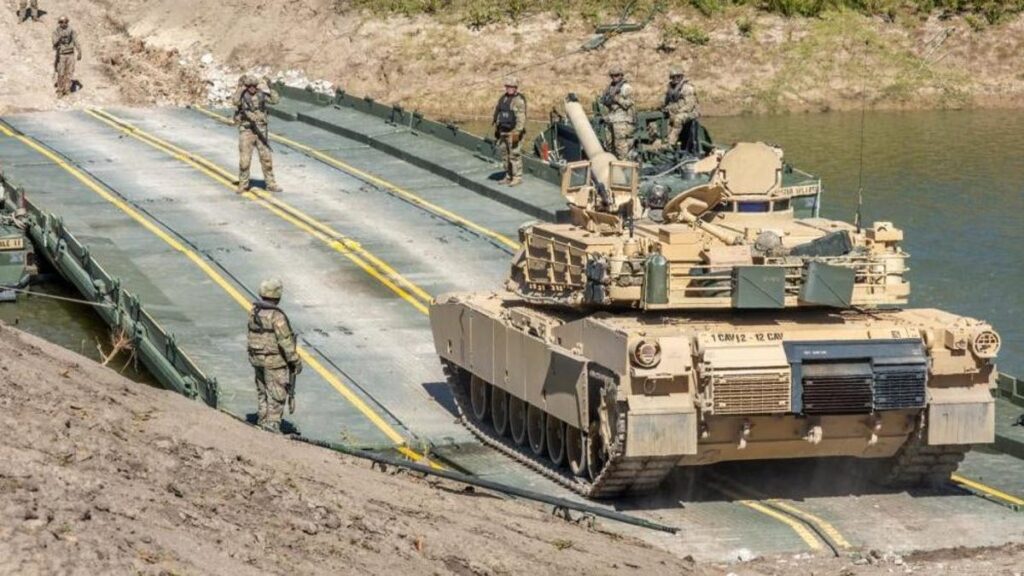Why the American Tanks Going to Ukraine Run on Gasoline

Photo: Defense Visual Information Distribution Service
On January 25, President Joe Biden announced that the United States would provide thirty-one M1 Abrams tanks to Ukraine. The announcement came after a month of speculation over what nations, if any, would provide the heavy armored vehicles to Ukraine, and it followed news that Germany would not only provide Ukraine with some of its own Leopard 2 tanks but would also permit other countries with Leopard 2s to offer them to Ukraine, as well.
What this means, in total, is that Ukraine is not just getting tanks, but it is receiving a hodgepodge of armored vehicles, ones built to work together broadly, though designed for employment with distinct supply needs. One of the principal differences between the Abrams and other tanks, including but not limited to the Leopard 2, is that the Abrams uses a gas turbine engine, rather than a diesel engine. While the Abrams, according to engine-maker Honeywell, can sip diesel, gasoline, or marine diesel for fuel supply, it is optimized to run on jet fuel.
The Department of Defense, which maintains the world’s most sophisticated military logistics system, is more than capable of providing multiple fuels for specific vehicles in-theater. But streamlined supply can be hard, and minimizing the variety of fuels needed for consistent performance can go a long way to ease that supply burden.
Why Does the Abrams Have a Gas Turbine Engine?
Before the M1 Abrams was developed as a tank, a gas turbine engine design was underway to go into a future tank. The Abrams, which began as the XM-1 experimental tank program, was designed to replace the powerful, but tall and loud, M-60 tanks used by US forces during Vietnam. Like all US tank designs, it was also built to serve in Europe, in the event that the Cold War turned hot, and would need to meet an expected massive advance of USSR tanks on the expected front lines of West Germany.
G/O Media may get a commission
Photo: Defense Visual Information Distribution Service
“The gas turbine is a comparatively simple engine having one-fifth as many moving parts as a piston engine and a minimum number of engine accessories,” wrote Captain David A. Noake, for an article in the 1967 edition of Armor. Noake goes on to outline the areas where a turbine is superior to a piston engine, including cold weather operation, torque and especially torque at low power, and oil consumption. Gas turbines are inferior, he notes, in dusty environments, at fuel economy when transporting less than half load, and fording bodies of water without specialized protection.
In addition, gas turbines run quieter, don’t produce smoke, and fit more propulsive power into a smaller space than a piston engine. With the initial run of Abrams, this promised 0 to 20 mph in just over 6 seconds, as well as a top road speed of 45 mph, or 30 mph cross-country. That top speed is somewhat diminished by the increased weight on a modern Abrams. As prototyped, the XM-1 weighed 59 tons, and as fielded, M1 Abrams can weigh 69 tons or more. That added weight, from a larger gun and better armor, among other changes, dropped the tanks top speed to 42 mph on roads, and reduced the unrefueled range by 60 miles, to 264.
Periodically, the United States has explored converting Abrams tanks to diesel engines. That would allow common fuel and likely more familiar repair needs, even if the engine itself would use more moving parts.
In 1974, the United States signed a Memorandum of Understanding with West Germany about making efforts to standardize their tank programs. This effort was pushed largely by Defense Secretary Donald Rumsfeld, which urged both new Leopard and Abrams designs to share common features, including a gas turbine engine. As a Government Accountability Office report from 1977 notes, while the US may have considered buying Leopard tanks, West Germany was never committed to buying Abrams for its own forces. An inability of the existing Leopard frame to incorporate the Abrams style turbine engine, among other factors, ultimately limited the collaborative attempt.
As a 1991 GAO report found, despite the lower maintenance promise of the reduced parts in an M1 Abrams engine, operating the tanks required twice as much spending on repair parts, over three times as much spending on spare parts, and over three times as much spending on fuel as the M60 tanks it was designed to replace. Despite those costs, the performance of the tank, as well as its starring role in the Gulf War, have kept it a durable feature of the US military for decades, with development of a new replacement only recently announced.
Newer features, like an independent auxiliary engine to power electrical systems, can help sustain the tank, as can new armor and sensors.
The design of the M-1 Abrams was ultimately influenced by both the threat of Soviet tanks in Europe, and the battle experience of tanks in the 1973 Arab–Israeli War. As the grim war in Ukraine continues, battlefield lessons will inform the next generation of tank designers. It remains to be seen of gas turbine or diesel piston is the most optimal engine for the fight, but when it comes to battle, the most important thing a tank can be is on hand.



